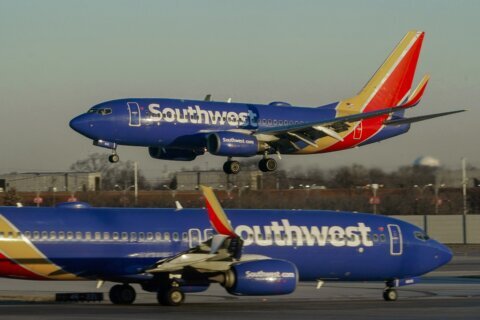The calls to come back to the office continue to go out, but by one measure, most D.C. office workers have not returned to their place of work yet.
Virginia-based company Kastle Systems creates building security entry systems that are used by thousands of buildings across the country and more than 700 in the D.C. metro area. It has been monitoring the number of employees swiping their entry cards and fobs, and scanning their QR codes, at its buildings. By that count, just 26.3% of office workers in the D.C. metro area had returned by the third week in June.
That is lower than the national average, and much lower than some other big cities.
“I think there are a couple of reasons for that. First of all, in general, the community has been relatively cautious compared to some other cities in how they’ve approached safety and COVID,” said Kastle Systems Chairman Mark Ein.
“Secondly, reliance on mass transportation is a meaningful factor in the amount of people coming to the office. Markets where people get to the office more by car, occupancy is higher. Interestingly, there is a meaningful difference within the D.C. area between downtown D.C. and the suburbs, with downtown meaningfully lower than occupancy in the suburbs, which is partially explained by how people get to the office,” Ein said.
In the top 10 cities Kastle Systems has tracked since the pandemic began, the average worker occupancy is now 32%, but in cities where the vast majority of workers commute by car and not public transportation, like Dallas and Houston, office worker occupancy is close to 50%.
The D.C. area’s office worker occupancy fell as low as 13% during the height of the pandemic last year. Currently, only three other cities being tracked have lower occupancy than the D.C. region: San Jose, San Francisco and New York.
Ein believes it will be months before all of those planning to return to the office will do so.
“We think there is going to be a big surge after Labor Day. A number of high-profile companies have targeted Labor Day as when they want people back, and we think that is going to be true in the Washington area as well,” he said.
Ein, who has created, owned and invested in prominent businesses with many people on his payrolls, also weighed in on the remote versus in-person debate, and he strongly favors the traditional in-person model.
“I think there is huge value in people collaborating together,” he said. “In the beginning of the pandemic, we had ties and a history of working together that we could leverage off of for awhile without being physically in person. But I think over time, those threads have frayed and it is just harder and harder to have the same level of productivity.
“That said, I think we need to be sensitive to how hard this has been on people, and how different peoples’ circumstances are different, so we have to accommodate that. But ultimately, we think that the way to have the greatest productivity is to have people in the office working together the majority of the time,” he said.
Kastle Systems updates its Getting America Back to Work Barometer online weekly.








